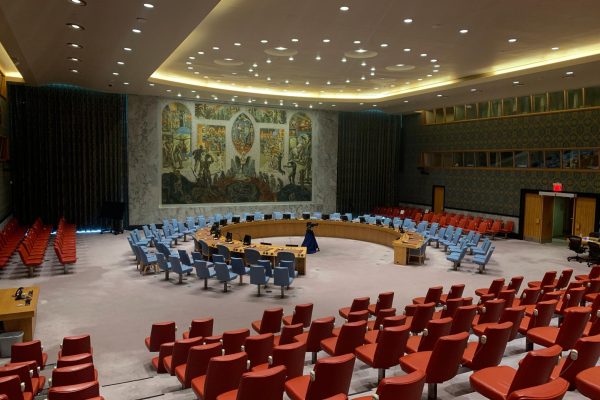Op-Ed: Immigrants Revitalize Californian Social Landscape
December 12, 2014
California boasts the second-largest percentage of foreigners in nation after Florida — 53 percent of these immigrants were born in Latin America. Undeniably, the huge influx of Latin American immigrants have affected the social, political, and economic landscape of California.
Controversy surrounds immigration as it becomes a more pressing issue in California affairs. Some believe that tax dollars are redirected to the welfare of unwanted immigrants — a prospect I find to be rooted moreso in racism than actual financial concern.
According to the US Census, eight out of every 10 immigrants participate in the workforce. These contributions have proven beneficial to California, and in turn the state has reworked its cultural identity to tend to the migrants. This proves how malleable the concept of “identity” really is, and how it can be refashioned to appeal to the whole of that place.
Newcomers have revitalized the Californian space, questioning the solidity of the “Californian identity.” As a malleable structure, the identity and landscape of California have been altered as newcomers join the California, however this is no indication that their contributions have undermined the identity.
Immigrants play a significant role in Californian affairs, and in turn their values and ideals as an identity have fused with the pre-existing Californian identity. Silicon Valley, located in the Southern portion of the San Francisco Bay Area, scores the highest in the state for “integrating immigrants,” according to the National Journal.
Scroll over charts and graphs in the following infographic to see numerical data.
Silicon Valley attracts a mix of newcomers: “from Indian computer programmers to Vietnamese entrepreneurs and Mexican day laborers.” This global mix of immigrants come from incredibly different political, economic, and social backgrounds. With respect to the model of contagious diffusion, it is natural for their ideals to meld with that of established Californians.
Californians have not rejected this new identity, but in fact embraced it, allowing immigrant identities to diffuse across the place with more ease.
According to Jazmin Segura, member of the nonprofit Educators for Fair Consideration, “California has shown so much leadership and is recognizing the contribution of immigrants to the state.” This indicates not only how accommodating California has been in integrating newcomers, but also how it has played an active role in immigration reform.
Governor Jerry Brown has been a key player in bringing this issue to the attention of the national arena by “supporting measures [that]… are making life easier for Silicon Valley’s immigrant underclass.” With political backing on the national level, immigrants can be less reluctant to integrate themselves and fully contribute to bettering the workforce and in turn the Californian quality of life.
Arguably one of the most progressive states regarding immigration reform, California has made significant efforts to integrate immigrants. These efforts have been federally recognized, proving just how invested Californians are in making these reforms.
While perhaps involuntarily, immigrants have reworked the Californian identity by the means of contagious diffusion and made their presence beneficial to the space.





![Freshman Milan Earl and sophomore Lucy Kaplan sit with their grandparents at Archer’s annual Grandparents and Special Friends Day Friday, March 15. The event took place over three 75-minute sessions. “[I hope my grandparents] gain an understanding about what I do, Kaplan said, because I know they ask a lot of questions and can sort of see what I do in school and what the experience is like to be here.](https://archeroracle.org/wp-content/uploads/2024/03/grandparents-day-option-2-1200x800.jpg)


























































